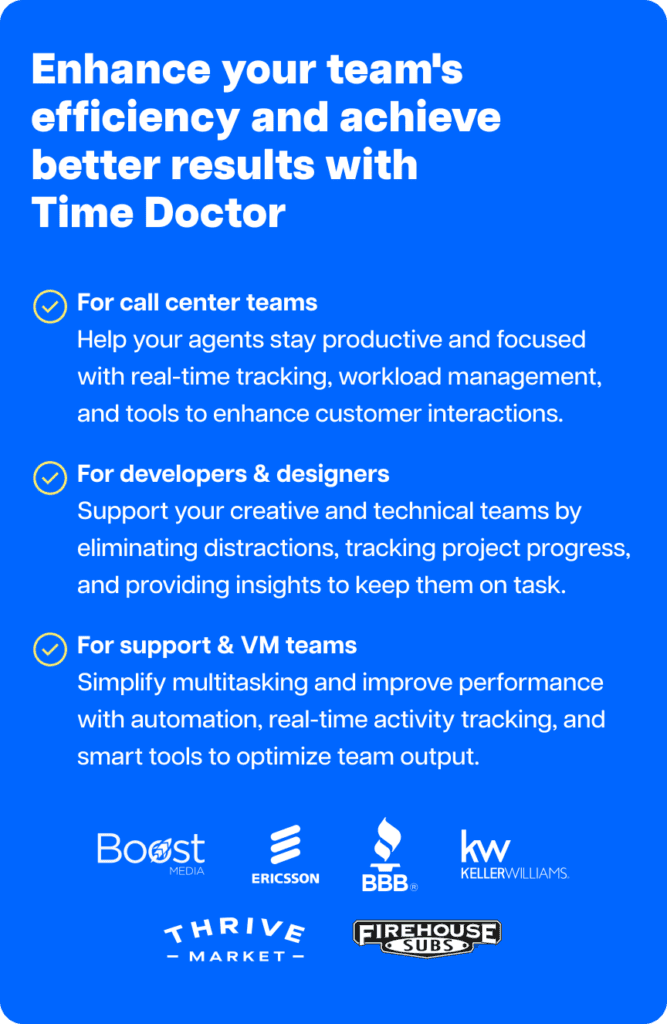Attendance and schedule adherence has always been an essential part of any high-functioning call center. In order to successfully handle incoming call volume and cater to client needs, agents must be present and ready to answer the phone.
But that’s easier said than done.
Managing attendance in a call center comes with some inherent challenges. Accurately forecasting for peak days and times, mitigating absenteeism and tardiness, and juggling varying client demands require solid strategy and tactics.
Since the global Coronavirus pandemic, the way we define “present” has changed dramatically. At one point, as many as 80% of call center agents were working remotely from home.
Today, being present for work in the call center often means simply being in front of your computer, whether that’s at your home office, the kitchen counter, or on the couch.
This new remote work environment has brought new challenges to attendance management and staffing within call centers. Work from home changed the way that both agents and leaders view attendance and schedule adherence.
In some cases, that means limiting work time for certain agents to avoid overworking and burnout. In others, it means making sure agents stay focused on achieving their minimum number of hours worked.
Either way, call center operations have changed.
With so many agents working from home, contact centers need new strategies to manage attendance remotely and ensure that the phones are effectively staffed at all times.
Save time and gain deeper insights with Time Doctor’s Work Schedules and Attendance Reporting features. Get started for free today.
Vital strategies to optimize remote attendance management

Communication
Call centers can’t meet attendance goals remotely without great communication.
The traditional, on-premise call center setting lends itself to a much simpler communication style. It’s easy to schedule meetings and individual discussions and to deliver reminders about schedule adherence in the typical call center. Agents are just a few steps away if a call center manager needs to reinforce any of the call center policies, including attendance.
For a remote workforce, leaders need to adjust the ways that they approach communication. They’ll need to take a more active role in delivering a clear and consistent message on expectations related to attendance and employee scheduling in a remote environment.
Managers shouldn’t expect that agents will just intuitively understand and abide by remote attendance policies on their own. Some agents will need help grasping and acclimating to what attendance means in a remote call center.
Educate them on when and how they are expected to be working. Explain how they’ll be measured and what happens if they’re not meeting expectations.
It’s also important for leaders to remain accessible to agents in case they have any questions regarding attendance. Agents should view leadership as a resource that will help them better understand policies and answer any of their questions regarding scheduling or specific attendance policies.
The best call center managers will provide agents with streamlined communication regarding all things attendance and scheduling related
Technology
Acceptable call center attendance is impossible without the right technology.
Technology is an integral part of operating any call center, regardless of agent location. On-premise call centers have long been using web-based timesheets and workforce management software to reinforce their attendance system.
Scheduling tools are an important part of understanding agent availability and avoiding overstaffing.
Operating with a remote workforce elevates the technology demands related to attendance and agent scheduling. Since remote employees can’t be physically seen and monitored in a colocated space, keeping track of employee attendance, work hours, and time management become fully reliant on dependable technology.
Call centers with a remote workforce should elevate their time and attendance systems by adding software solutions like asynchronous project management tools, workflow systems, and time tracking software.
The investment in the right technology for your remote workforce will be worth it. Not only will it create a clear and accurate record of employee attendance, but the right tools can deliver valuable workday insights that can help your team members become more productive and efficient.
These increases in agent productivity will ultimately result in a better customer experience and higher customer satisfaction.
Training
Successful remote call centers must train for desired attendance habits.
Effective leaders of remote call centers should also plan to train for time and attendance in a different way than they would for an on-premise workforce.
With remote teams, attendance and schedule adherence goes beyond getting to the office and clocking in by a certain time.
Remote teams will need some basic initial training on the scheduling process and how to use call center scheduling software but remote workers should also be trained on how to make the most of working from home.
Strong remote leaders will be able to train their call center employees on best practices of time management in a remote work setting, like how to avoid distractions and effectively allocate time. Show them how to use technology, call center metrics, and other resources to learn and improve how they work best.
In addition to teaching them how to maximize remote work productivity, leaders should encourage (and coach for) healthy work habits as well.
This type of training should be ongoing. Just as you invest your own time into becoming a better leader, you should act as a mentor in helping your agents do the same.
Even though you aren’t in the same office, you remain responsible for your agents’ professional development.
Tactics for remote attendance management optimization

Establish a written attendance policy
The first step to good attendance and schedule adherence in a remote call center is establishing a written attendance policy. This detailed policy document will provide an explicit framework for what’s expected of agents when it comes to attendance.
A written attendance policy should include specific details about who the policy applies to, what the acceptable working hours are, the methods that will be used to track and record attendance, and the consequences of not meeting attendance policy requirements.
It should also address how employees will apply for time off and notify leadership of work schedule changes.
A good attendance policy will not only keep everyone on the same page and mitigate absenteeism, but it will also protect you against litigation and give
This comprehensive guide on how to create an employee attendance policy provides a template that you can use for your organization.
Use video conferencing to communicate
We’ve already established that communication is essential to success in a remote work environment. But it’s just as important that you communicate through the appropriate channels.
Communication done incorrectly can be just as detrimental as not communicating at all.
When it comes to communication in a remote setting, it’s best to use video conferencing. While email and messaging apps are great tools for sharing information and collaborating across distance, they aren’t well suited for communicating policies about attendance and schedule adherence.
Whether you’re explaining a new policy, implementing a new procedure, or coaching against unsatisfactory behavior, discussions about attendance should be done with both parties being able to see each other (virtually) face-to-face.
Using video conferencing communication ensures that nothing is misinterpreted, nothing is lost in translation, all questions are answered, and that everyone is on the same page regarding what is being communicated.
Integrate time tracking software into your tech stack
When building out your remote work tech stack, include a time tracking software that will bring actionable, quantitative data insights to your workforce management systems.
Adding a more robust tool will take your attendance management and schedule adherence capabilities to a much higher level than a simple time clock.
The most advanced time tracking software of today can tell you exactly what each individual employee is doing with their workday. It can give you real-time data on what apps they are using most, how productive they are being, and how their productivity stacks up against other agents.
These insights will help you to not only create a culture of accountability, but also give you valuable data points that can help you acknowledge top performers, coach up poor performers, and train new team members to the highest standards.
If knowing when your agents clock in and out is good, knowing how they spend their time is better. By adding time tracking software to your suite of technology tools, you’ll be able to learn so much more about how, when, and for how long your employees are working.
Develop skills for working efficiently in a WFH environment
When working on-premise, call center leaders have the ability to walk the call center floor, listen to agents on the phone, and provide instant coaching and feedback on how an agent can improve. This is extremely valuable.
In a remote work environment, this same concept should be applied to attendance and schedule adherence. We know that, with the help of time tracking software, call center leaders can gain valuable insights into how their employees work.
Leaders should take this information and use it to coach and train their employees to become more effective and efficient when it comes to attendance and schedule adherence.
For example, teach them how to use data to understand what days and times they are at their most productive. Show them how to best allocate their time to accomplish all of their necessary tasks. Help them identify the sites and apps that are distracting and unproductive for them. Coach them to discover and implement the habits of top performers.
By taking the time to invest in your employees’ work skills, you empower them to meet and exceed time and attendance goals.

Ryan Plank is a content marketer with a degree in Journalism and a background in technology. He lives in Orlando, Florida, and is an avid golfer.


